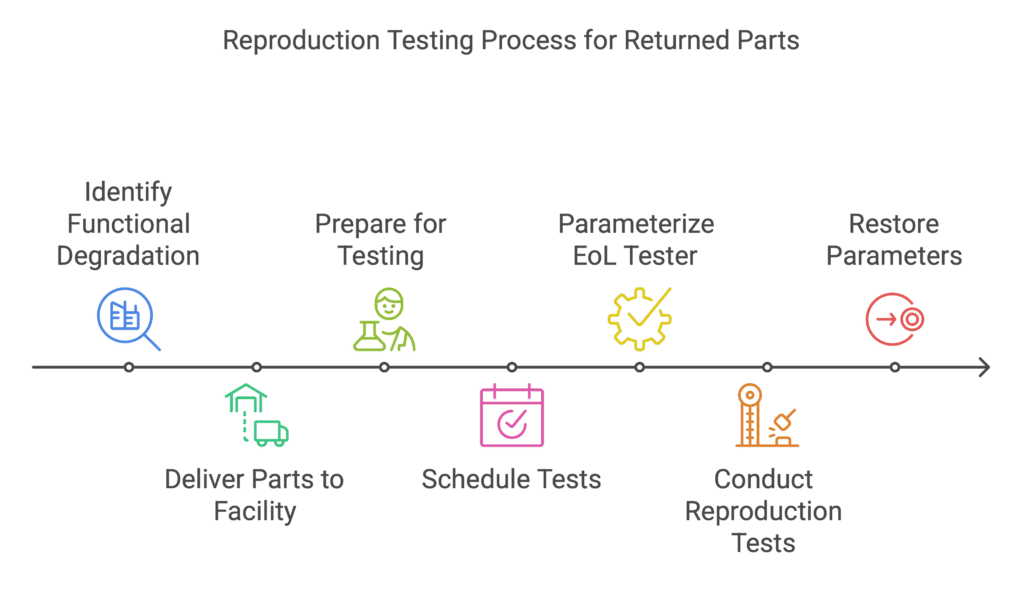During problem analysis for the reported product, the most crucial part is identifying the root cause. Reproduction tests are one method of validation.
Why? Because by replicating production conditions, they help us determine if the problem could have occurred at our facility or if it can be ruled out.
Quality Complaints – The Daily Routine of a Quality Specialist
The first requirement is the physical receipt of the claimed part. However, before taking any action, it is advisable to gather additional information before returning it from the customer’s location.
A Minor Note: Even if customers use the term “claimed part,” I believe we should use “suspected part” in reports.
Why? Because until we conduct a full analysis, we do not know if the problem originated in our production process or elsewhere.
Returning to the topic 😊.
If we have a resident at the customer’s location, we can request additional photographic documentation of the reported part along with the traceability labels. It is beneficial to gather information about labels on subcomponents as well as the final product’s label.
Why? Because subcomponents might have been swapped, while the final product label remained unchanged. Later, customers often return such parts under warranty claims due to functional degradation.
With this information, we can sometimes proceed with reproduction tests, especially when the customer reports aesthetic issues with the delivered component.
Example: a scratch on a painted bumper. With this information, we can verify if our process can provoke a scenario where this issue occurs.
Reproduction tests for functional degradation quality issues
In scenarios involving functional degradation, we need the parts directly at the production facility. Once delivered, we can prepare for testing on the production line.
If the End of Line (EoL) tester is on a production line for different projects, remember to properly parameterize the station for the part being tested. After completing the reproduction tests, restore the parameters to their original settings.
Schedule tests for:
- Longer breaks during the shift when the workstation is available to perform above activity,
- Time when the production line is not operating.
If this is not possible, include the tests in the weekly planning, considering customer orders.

Reproduction tests as Measurement System Validation
Another critical reason for reproduction tests is validating the measurement system. When might this occur? Consider a complaint about a lack of tightness in a returned component.
One of the final control operations is a leakage test. What should we do? Check if the leakage test detects the lack of tightness in the reported product.
If the result is negative, the product was likely damaged outside the production facility. We must exclude scenarios like post-production handling that could cause the issue.
Example: cutting containers with an improper knife, which can damage fuel pipes at the top of the container.
If the result is positive and the part shows damage indicating the reported leak, we are dealing with a non-compliant measurement system that allows non-compliant parts to pass as acceptable.
Reproduction Tests for mechanical damage
Another scenario involves “recreating” mechanical damage.
Focus on:
- Correctly moving subcomponents from the warehouse to the production line,
- Properly feeding parts to the production station,
- Correctly picking subcomponents from containers for assembly operations.
Most often, the latter case is relevant in production conditions.
For example, when checking mechanical damage on a subcomponent, verify if the operator damages other subcomponents from the same container due to its low height on the rack.
In one analysis, we conducted reproduction tests on improper removal of final products by customer employees, which could lead to mechanical damage.
If facing this scenario, remember a proactive approach by offering training to customer employees on how to handle our final product.
If you want to learn more about conducting problem cause analysis and the reproduction tests performing, we invite you to our training sessions:
Dariusz Kowalczyk


